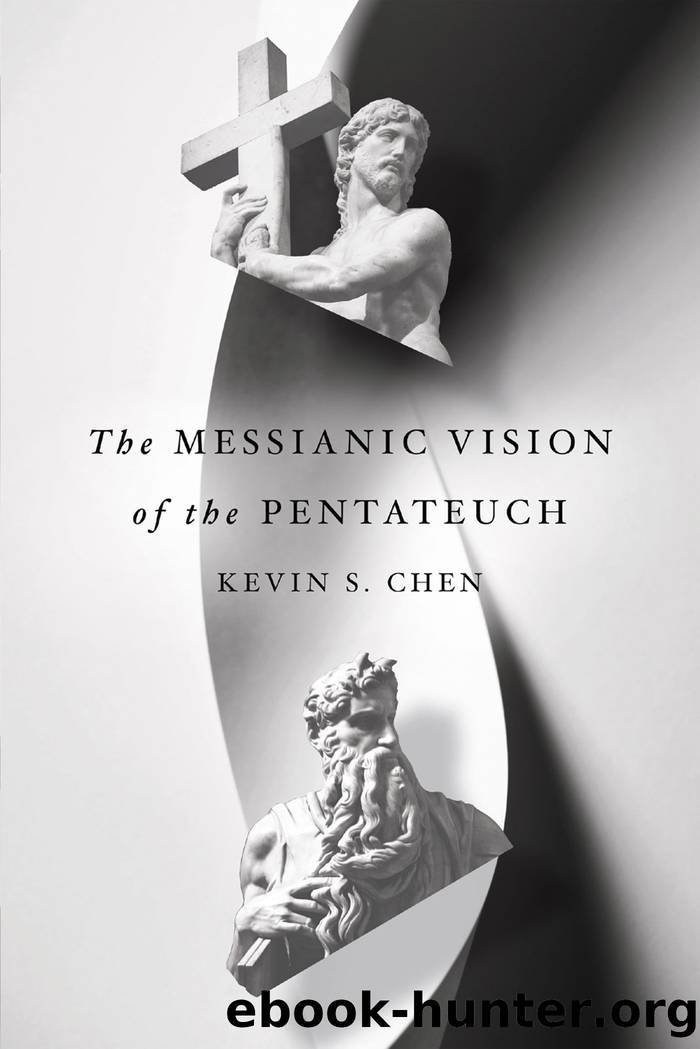The Messianic Vision of the Pentateuch by Kevin S. Chen

Author:Kevin S. Chen
Language: eng
Format: epub
Tags: Old Testament;exegesis;biblical studies;Pentateuch;compositional criticism;canonical criticism;foreshadowing;prophecy;prediction;Christ;anointed;Messiah;messianic;Moses;seed of the woman;seed of Abraham;Sinai;Lion of Judah;exegetical;Mosaic Law;Christ centered biblical theology;Jesus;Messianic prophecy;old testament studies;old testament interpretation;old testament exegesis;old testament theology;jesus in the old testament;John Sailhamer
Publisher: InterVarsity Press
Published: 2019-09-24T09:19:47+00:00
THE BALAAM NARRATIVE AND BALAAMâS ORACLES
In order to properly understand the Messianic prophecies in Balaamâs third and fourth oracles (Num 24:3-9, 15-19), we must interpret them in light of the Balaam narrative as a whole (Num 22â24).15 As has already been pointed out, this section is closely tied to the preceding context and especially to Numbers 21:4-9 through the keyword nakhash (× ×ש×), meaning âsnakeâ or âomenâ (see Num 23:23; 24:1). The link between Numbers 22â24 and Genesis 3 is further strengthened through the common theme of a talking animal. Moreover, though used of the angel of the Lordâs opposition to Balaam, the verb satan (שָ××Ö¸×, âto opposeâ), a cognate of which is âthe adversaryâ (×ַשָּ××Ö¸×) in Job 1â2, appears in Numbers 22:22, 32, its only two occurrences in the Pentateuch. The solution to Israel and humanityâs problem with their adversary, âthe [talking] snakeâ is what it has always beenâthe seed of the woman who will crush its head (Gen 3:15) and the heads of its seed (Num 24:17), even as he is struck on the heel by it (Gen 3:15) and lifted up like a bronze snake on a pole (Num 21:8-9). This inclusio of intertextual allusions to Genesis 3:15 in Numbers 21â24 was also pointed out above.
Although Moabâs opposition to Israel (Num 22:2-6) is broadly similar to the responses of Edom (Num 20:14), the Canaanite king of Arad (Num 21:1), Sihon (Num 21:21-31), and Og (Num 21:33-35), the extended attention given to Moabâs opposition (Num 22â24), in conjunction with Balaamâs oracles as one of the four major poetic sections of the Pentateuch, yields rich intertextual relationships to other key passages in the Pentateuch and its Messianic vision. As demonstrated above, Numbers 21â24 is compositionally related to Genesis 3. The discussion of Numbers 22â24 below will also show that the Balaam narrative is also deeply intertwined with Genesis 12:1-3 and the Abrahamic covenant, Pharaohâs oppression of the Israelites in Exodus 1, and the longest continuous Messianic prophecy in the Pentateuch in Genesis 49:8-12.
Sailhamer observes that âthe Balaam story, which lies at the close of Israelâs sojourn in the wilderness, parallels many of the events and ideas of the story of Pharaoh at the beginning of the book of Exodus. Both men, Pharaoh and Balak [king of Moab], were kings of large and powerful nations which represented a major obstacle to Israelâs entering the Promised Land.â16 Both rulers were worried that the Israelites were too âmanyâ (רַ×) and too âstrongâ (עָצ×Ö¼×, Ex 1:7, 9; Num 22:3, 6) and took counsel against them (Ex 1:9-10; Num 22:4-6). Hedwige Rouillard relatedly points out the parallel between the phrase âcovers the eye of the landâ in Numbers 22:5, 11 and Exodus 10:5, 15, as well as the use of magic by Israelâs enemies.17 Sailhamer further notes that Exodus 1:10 connects Pharaohâs opposition to Israelâs possession of the Promised Land and that Pharaohâs three attempts to suppress Israel (Ex 1:11-22) parallel Balakâs three attempts to get Balaam to curse Israel (Num 24:10).18 Pharaohâs first measure
Download
This site does not store any files on its server. We only index and link to content provided by other sites. Please contact the content providers to delete copyright contents if any and email us, we'll remove relevant links or contents immediately.
The Lost Art of Listening by Michael P. Nichols(7170)
Why I Am Not A Calvinist by Dr. Peter S. Ruckman(4051)
The Rosicrucians by Christopher McIntosh(3375)
Wicca: a guide for the solitary practitioner by Scott Cunningham(3046)
Signature in the Cell: DNA and the Evidence for Intelligent Design by Stephen C. Meyer(2880)
Real Sex by Lauren F. Winner(2875)
The Holy Spirit by Billy Graham(2783)
To Light a Sacred Flame by Silver RavenWolf(2681)
The End of Faith by Sam Harris(2637)
The Gnostic Gospels by Pagels Elaine(2403)
Waking Up by Sam Harris(2334)
Nine Parts of Desire by Geraldine Brooks(2283)
Jesus by Paul Johnson(2232)
Devil, The by Almond Philip C(2207)
The God delusion by Richard Dawkins(2193)
Heavens on Earth by Michael Shermer(2191)
Kundalini by Gopi Krishna(2094)
Chosen by God by R. C. Sproul(2058)
The Nature of Consciousness by Rupert Spira(1983)
